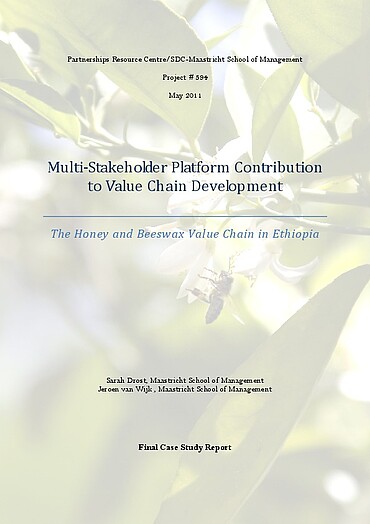Abstract
This report investigates the dynamics of a multi-stakeholder platform (named: coordination group, or CG) for stakeholders of the honey and bees wax value chains in Ethiopia. The CG was initiated by the Dutch development organisation SNV in 2005 as part of a broader programme to improve market access for farmers and small- and medium-sized honey companies. To examine the MSP, both its internal, organisational dynamics and its external dynamics, i.e. the changes brought about in key areas of the institutional business environment, were analysed. A mixed-method design was used for the data collection and -analysis, including in-depth interviews with 18 key representative honey stakeholders participating in the CG meetings, document analysis, and a social network analysis. The dominant impression is that the CG has positively contributed to the development of the Ethiopian honey and beeswax value chains. The CG has enabled stakeholders from the three societal sectors to participate in a new, loose governance structure that meets the majority of collaboration requirements. It managed to develop a strong export-orientation, tie a nucleus group of committed stakeholders, maintain a fairly horizontal discussion structure, and gradually involve government authorities that previously had little interest in the sector. The CG operates as a platform that facilitates social capital formation in the fragmented honey sector. Ethiopian honey stakeholders have better access to relevant knowledge, their export opportunities have improved, and they are better organized in associations. Little change was achieved in respect of access to credit or capital.
